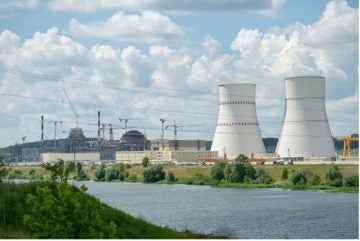
Rosatom has completed concreting of the foundation plate for the turbine unit at unit 2 of the Kursk-II NPP. This is an important element in the turbine hall. It will support the components of the turbine weighing some 3,500 tonnes. The level of vibration generated during the operation of equipment must also be also taken into account and the foundation must ensure uniform load distribution.
“When constructing the monolithic foundation, a modern vibration isolation system was used. It automatically minimises vibration and vibration during operation. The entire foundation consists of a lower slab, reinforced concrete columns and an upper foundation slab with a vibration isolation system – 89 vibration isolators weighing about 600 kilograms each,” commented Alexander Uvakin, Director of the Kursk NPP.
The plate dimensions are 95 by 61 metres. The thickness of the upper foundation plate varies from 4.6 to 5.3 metres in different parts. This range depends on the strength of the load.
The foundation concreting process took 36 hours and went through several stages. At each stage, the quality control of the work was carried out,” said Oleg Shperle, Vice President of Atomstroyexport JSC and Project Director for the construction of Kursk-II. “Given that during operation, the foundation will carry dynamic loads, and at the same time there is a great risk of stratification of concrete, special requirements in the process of concreting were devoted to the quality of the concrete mixture. For concreting, a self-absorbing concrete mixture was used. The volume of concreting was 2,454 cubic metres. About 70 specialists from contractor Titan-2 were involved in the work. Within 28 days after laying the mixture, the concrete will achieve design strength.”
Kursk II will replace the currently operating Kursk NPP, which comprises four ageing RBMK reactors (one of which is already closed). Units 1&2, currently under construction, will have VVER-TOI reactors – a development of the VVER-1200 reactor design. The VVER-TOI has increased power and improved technical and economic indicators, as well as increased resistance to extreme.






